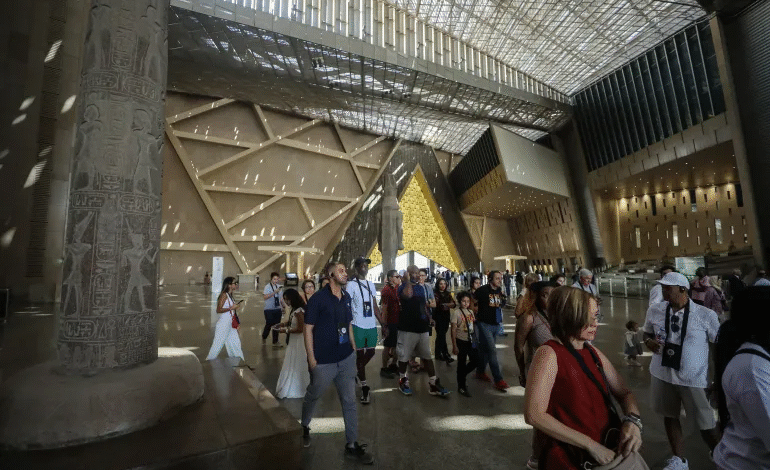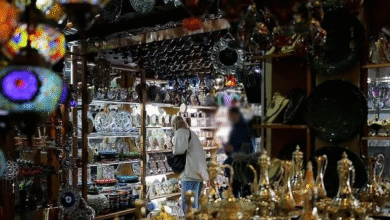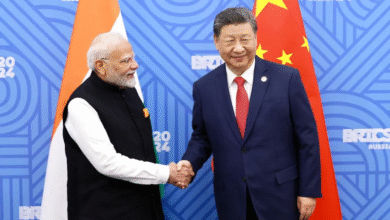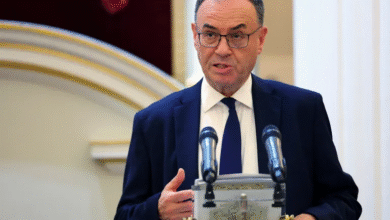Egypt Ends Equal Entry Fees for Arab Tourists, Aligns Them with Foreign Visitor Rates Starting 2026

After more than two decades of treating Arab tourists the same as Egyptian nationals in terms of ticket prices for archaeological sites and museums, Egypt’s Supreme Council of Antiquities has announced a policy change. Beginning in January 2026, Arab visitors will be classified as foreign tourists and charged accordingly — a move the government says is aimed at enhancing the financial sustainability of the antiquities sector.
In an official statement, the Council explained that this decision reverses a 2002 resolution which had granted Arab tourists the same entry fees as Egyptians. The new pricing structure will feature only two categories: “Egyptians” and “Foreigners,” with no exceptions — a move justified by significant income disparities between the groups.
The Council emphasized that the goal is to strike a balance between making Egypt’s unique archaeological heritage accessible to the public and ensuring the financial resources necessary for service development, facility upgrades, and heritage conservation — all vital to Egypt’s cultural identity and global standing.
Surge in Arab Tourism
The decision comes amid a notable boom in Arab tourism to Egypt. In 2024, the country welcomed approximately 2.85 million Arab tourists, led by travelers from Saudi Arabia, followed by the UAE and Kuwait. Arab tourism accounted for around 18% of the total number of visitors that year.
In the first quarter of 2025, Egypt recorded 3.9 million tourist arrivals — a 25% increase compared to the same period in 2024 — with Gulf nations contributing the largest share.
The Egyptian tourism sector aims to double this figure by year-end, targeting 5 million Arab tourists as part of a broader plan to boost tourism-generated revenue. Efforts are underway to increase direct flights from the Gulf and simplify visa procedures for Maghreb nationals.
Financial Realignment or Missed Opportunity?
The Supreme Council of Antiquities maintains that the pricing adjustment is essential for creating a sustainable and balanced model within the heritage sector.
Former Assistant Minister of Antiquities, Dr. Mohamed Abdel-Latif, welcomed the move, calling it “timely and beneficial for the national economy.” He argued that dual pricing systems are standard practice worldwide and are not discriminatory but rather economic strategies to maximize returns while encouraging tourism.
He also stressed that improving service quality — in terms of facilities, cleanliness, and guided experiences — is more important than pricing in attracting visitors. “If the overall experience is enhanced, visitors will continue to come, even at slightly higher ticket prices,” he said.
Tour guide Loay Ahmed also voiced support for the decision, stating that the change directly benefits national revenue. “An Arab tourist could visit the Giza Pyramids for just EGP 60 (around $1.20), while a foreign visitor pays EGP 700 ($14.70) for the same experience. This gap is economically unjustifiable,” he noted.
Ahmed believes the revised pricing will help fund necessary restoration and development efforts, especially considering that most Arab tourists come from countries with high income levels and will not be deterred by the price difference — particularly if it’s coupled with better services.
Cultural and Psychological Implications
However, not everyone is on board. Some heritage professionals and cultural commentators have expressed concern about the symbolic message the change may send to Arab visitors.
Egyptologist and international lecturer Bassam El Shammaa called for an urgent review of the decision. He told Al Jazeera Net that the psychological impact on Arab tourists should not be overlooked. “While some may justify it with currency differences — like the Kuwaiti dinar being worth over EGP 160 — the fact remains that Arab tourists may feel less welcomed by the reclassification,” he warned.
El Shammaa highlighted the cultural closeness between Egypt and the Arab world, arguing that the former preferential pricing reflected this shared heritage. “Many Arab tourists are deeply emotionally connected to Egypt’s museums, temples, and tombs — visiting them not just for sightseeing, but as a cultural pilgrimage,” he said.
Pricing Isn’t Everything
He also cautioned that increased ticket prices could result in a partial decline in Arab visitation to heritage sites, using the Grand Egyptian Museum as an example: it charges EGP 200 ($4) for Egyptians and EGP 1,500 (nearly $30) for foreigners. “Tourists don’t just pay for tickets — they spend on food, souvenirs, and services that significantly benefit the economy,” he noted.
Drawing on international examples, El Shammaa referenced the British Museum, which offers free entry and relies on smart funding strategies, such as donation boxes and high-revenue gift shops.
He warned that even affluent Arab visitors might choose to skip cultural sites entirely or opt for other countries that make them feel more symbolically welcomed. “They may still visit Egypt, but never step inside its museums or temples,” he said.
In conclusion, El Shammaa urged policymakers to reconsider the move or at least offer symbolic or practical advantages to Arab visitors. “Respecting the emotional and cultural ties between Egypt and its Arab neighbors is essential. A gesture of appreciation can go a long way in preserving those bonds.”








